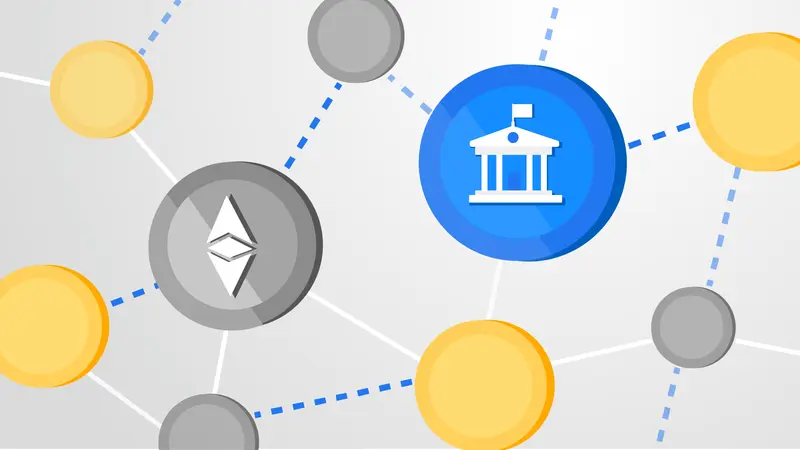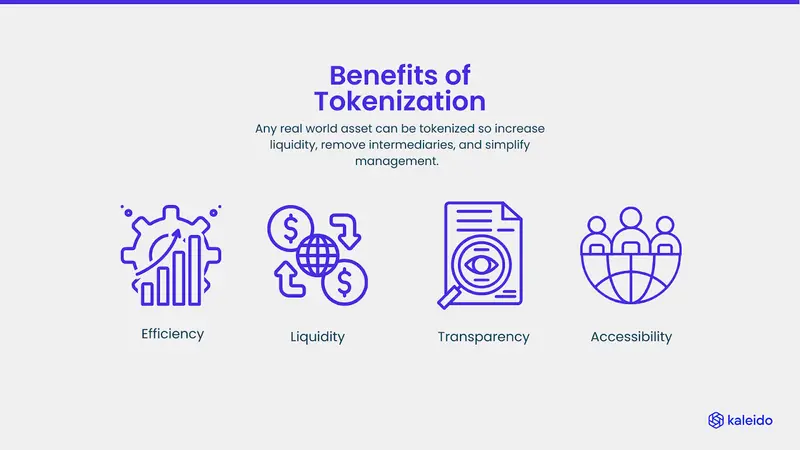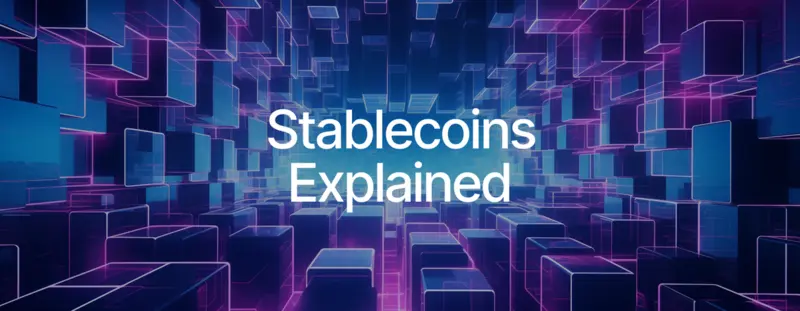Quick Links
One of the most revolutionary developments in the digital era over the last ten years has been blockchain technology. Numerous applications have resulted from its decentralised, transparent, and safe nature; none more innovative than Decentralised Finance (DeFi). By providing an open, permissionless, and trustless environment for financial transactions, DeFi is transforming established financial systems. This blog examines blockchain’s contributions to DeFi’s expansion, as well as its advantages, drawbacks, and prospects for decentralised finance.
What is Blockchain?
Fundamentally, blockchain is a distributed ledger system that keeps track of transactions on several computers connected to a network. Blockchain refers to a system in which individual blocks, each containing a series of transactions, are connected to one another by cryptographic hashes to form a chain. Without requiring a centralised authority, this structure guarantees that the data saved is transparent, verifiable, and unchangeable.
Among the essential of blockchain features are:
- Decentralisation: The data is shared among peers in a peer-to-peer network, with no single entity controlling it.
- Security: Transactions are tamper-resistant and secure because they are validated using sophisticated algorithms.
- Transparency: All network users have access to the ledger, guaranteeing accountability.
Beyond cryptocurrencies like Bitcoin and Ethereum, blockchain serves as the foundation for DeFi and makes decentralised financial apps possible by blockchain.
Understanding Decentralized Finance (DeFi)
The word “DeFi” describes a financial ecosystem based on blockchain technology that mimics conventional financial services (such as borrowing, lending, trading, and investing) without the need for middlemen like clearinghouses, banks, or brokers. By making financial services accessible to anybody with an internet connection, the aim is to democratise money.

Key components of DeFi include:
- Smart Contracts: Self-executing contracts having the conditions of the agreement explicitly encoded into code. They do away with the requirement for middlemen.
- Decentralized Applications (dApps):Applications that operate on blockchain networks and provide decentralised financial services are known as decentralised applications, or dApps.
- Stablecoins: A type of cryptocurrency that reduces volatility in the DeFi ecosystem by being tethered to conventional assets like the US dollar.
The Ethereum blockchain, which facilitates the development and execution of smart contracts and decentralised apps, serves as the foundation for most DeFi platforms.
Key Features of DeFi
DeFi’s primary attraction is found in the unique characteristics that make it stand out from conventional blockchain financial systems. Among them are:

Accessibility
Participation in the DeFi ecosystem is open to everybody with an internet connection, regardless of location or financial status. One of DeFi’s biggest benefits is its inclusivity, as it lowers barriers that impede individuals in underbanked or unbanked areas from obtaining financial services by blockchain.
Transparency
Every transaction in a DeFi system is transparent and open to public auditing since it is documented on a public ledger. Because consumers may confirm the validity of transactions, this transparency contributes to the development of user trust.
Interoperability
DeFi apps are frequently made to function flawlessly with one another. For example, customers can shift assets between platforms, allowing them to mix and match services to fulfil their financial needs.
Non-Custodial Nature
Because DeFi platforms are non-custodial, consumers maintain complete sovereignty over their belongings. In contrast, customer funds are held in custody by banks or brokers in traditional financial institutions.
Automating with Smart Contracts
Smart contracts carry out predetermined actions without requiring human input. For instance, on a DeFi lending platform, a smart contract will automatically release collateral if a borrower fails on a loan.
Popular DeFi Applications and Use Cases
A number of DeFi applications have become well-known because they offer substitutes for conventional blockchain financial services. Several common DeFi use cases consist of:
Decentralized Exchanges (DEXs)
Without the requirement for a central authority, users can trade cryptocurrencies directly with one another on DEXs like Uniswap and Sushiswap. These platforms provide liquidity through liquidity pools and peer-to-peer trading made possible by smart contracts.
Lending and Borrowing
Without the need for middlemen, consumers can lend and borrow assets using DeFi platforms like Aave and Compound. Users who deposit assets can earn interest on them, and borrowers who submit collateral can access cash. Smart contracts control the procedure, doing away with the necessity for credit checks and enabling quick loan availability.
Yield Farming
Staking or lending cryptocurrency assets in order to earn returns in the form of more cryptocurrency is known as yield farming. In the DeFi ecosystem, this method has grown in popularity as a means of generating passive revenue.
Stablecoins
The use of stablecoins, like DAI and USDC, is crucial to reducing the volatility of cryptocurrencies. The fiat currencies that these digital currencies are linked to offer stability to users who wish to utilise DeFi services without having to worry about price swings.
Insurance
Decentralised insurance services are provided via DeFi insurance platforms such as Nexus Mutual. Customers can purchase insurance against exchange hacks, malfunctioning smart contracts, and other unanticipated circumstances, offering a safety net in the still-developing and occasionally dangerous DeFi market.
Benefits of DeFi
DeFi is appealing for a number of reasons, particularly given the state of the global financial system today. Among the principal advantages are:

Lower Costs
DeFi lowers transaction costs dramatically by doing away with middlemen. Users can now transfer money between countries and take out loans without having to pay large fees to banks or other financial organisations.
Financial Inclusion
DeFi empowers people in areas with weak banking infrastructure by making financial services accessible to anybody with an internet connection. This could reduce the population’s disparity between banked and unbanked people.
Control Over Assets
In traditional finance, investors have to put their trust in other organisations to handle their money. DeFi, on the other hand, lessens dependency on centralised organisations by enabling people to maintain complete sovereignty over their assets.
Innovative Financial Products
By introducing cutting-edge products like synthetic assets—derivatives that resemble real-world assets—and flash loans—unsecured loans that must be repaid in a single transaction, DeFi has given customers access to financial tools that were previously unattainable.
Challenges and Risks in DeFi
DeFi has difficulties despite its potential. Among the principal dangers are:

Security Concerns
Vulnerabilities in smart contracts pose a serious threat in the DeFi domain. If a smart contract contains a fault or is exploited, users can lose their funds. A number of well-publicized intrusions, including the 2021 $600 million Poly Network hack, have sparked questions regarding the security of DeFi devices.
Regulatory Uncertainty
DeFi works in a legal gray area in many nations. Government regulations may be introduced that impede the spread of DeFi, posing difficulties for both developers and users in the absence of clear legislative guidance.
Volatility
Many DeFi platforms still deal with extremely volatile assets, even though stablecoins help to reduce some of the volatility associated with cryptocurrencies. Changes in price have the potential to cause substantial losses for ecosystem players.
Complexity for Users
The level of technical expertise required by DeFi platforms might be daunting for non-technical users. For those who are unfamiliar with the field, managing private keys, interacting with decentralised applications, and comprehending smart contracts might be difficult.
Role of Decentralized Autonomous Organizations (DAOs) in DeFi
A rising force in the DeFi domain, Decentralised Autonomous Organisations (DAOs) allow group decision-making without centralised governance. Discover how the governance and operation of DeFi protocols are being transformed by DAOs.
Impact of DeFi on Global Financial Systems
DeFi’s ability to lessen dependency on established banks and centralised organisations has the potential to upend international financial systems. Examine the potential effects of decentralised finance on future financial institutions and world economies.
DeFi and Traditional Finance
Learn the key distinctions between traditional financial systems and decentralised finance, and investigate how DeFi provides a different approach to services like trading, lending, and borrowing.
Risks and Best Practices for Using DeFi Safely
DeFi comes with a number of dangers, such as liquidity problems and smart contract weaknesses. The recommended techniques for safeguarding your assets and securely navigating the DeFi environment are described in this section.
How Stablecoins Stabilize the DeFi Ecosystem
In DeFi, stablecoins are essential for reducing the volatility of cryptocurrency prices. Learn about their functions, varieties, and significance for maintaining price stability and liquidity.

Role of Liquidity Providers in DeFi
Liquidity providers are vital to the running of decentralized exchanges (DEXs) and lending platforms. Discover the advantages and disadvantages of becoming a liquidity provider as well as how liquidity pools operate.
DeFi and the Rise of Tokenization
Real-world assets can be digitally represented on blockchain networks through tokenisation. This section examines how DeFi is affected by the tokenisation of assets, ranging from real estate to art.
Governance in DeFi
DeFi’s governance is mostly decentralised, with token owners frequently serving as the decision-makers when it comes to choices like fees, protocol updates, and operational modifications. Explore how decentralized governance works and the vital role governance tokens play in designing DeFi platforms.
Role of Oracles in DeFi
Oracles are essential parts of DeFi because they give smart contracts access to real-world information such as interest rates, asset values, and weather reports. Discover the many kinds of oracles and how they keep DeFi protocols secure and trustworthy.
Development of Distributed Lending and Borrowing Systems
Among the most well-liked DeFi services are decentralised lending and borrowing, which provide yield on assets and permissionless access to loans. The development of platforms such as Aave and Compound is discussed in this section along with its advantages over conventional lending systems and operating methods.
Role of Layer 1 and Layer 2 Solutions in Scaling DeFi
For DeFi applications, scalability has been a challenge, particularly on crowded networks like Ethereum. This section describes how Layer 2 scaling solutions (Optimism, Arbitrum) and Layer 1 blockchains (Ethereum, Solana) are assisting in resolving these problems, enhancing transaction speeds, and cutting expenses.
How NFTs are Expanding the Use Cases of DeFi
Non-fungible tokens (NFTs) are not confined to digital art; they are being used in DeFi for collateralized loans and tokenized assets. Find out how new opportunities for investment, ownership, and liquidity in the financial ecosystem are being created by the junction of NFTs and DeFi.

Collateralization of Loans
On DeFi platforms, NFTs are utilised as collateral for loans. Holdholders of NFTs can now use their high-value digital assets to obtain liquidity, much like in traditional finance where valuable assets can be pledged to secure a loan. Users can borrow money against their NFTs via platforms such as NFTfi, and the smart contracts guarantee that the NFT remains locked up as collateral until the loan is paid back. The NFT may be claimed by the lender in the event of a borrower default.
Fractional Ownership of NFTs
A significant advancement that NFTs offer to DeFi is the notion of fractional ownership. Tokenisation allows NFTs that represent expensive assets (like rare digital art or real estate) to be split up into smaller, more manageable chunks that are represented as ERC-20 tokens. This democratises access to asset ownership and increases the accessibility of investment opportunities by enabling several investors to hold a portion of a high-value NFT.
Liquidity for Illiquid Assets
NFTs are less liquid than fungible tokens, such as cryptocurrencies, because they are by nature unique. To improve liquidity for these assets, DeFi platforms are now creating liquidity pools where users can stake NFTs and get fungible tokens in return. To make it easier for users to trade NFTs, initiatives such as Unicly enable NFTs to be combined into collections and then tokenised to form liquidity pools.
Yield Farming with NFTs
NFTs are being integrated into yield farming tactics within DeFi platforms. Staking opportunities are provided by several DeFi protocols, allowing users to stake their NFTs and get incentives or yield in exchange. On sites like Aavegotchi, for instance, DeFi is combined with NFTs to enable users to bet and earn interest on their NFTs in addition to taking advantage of the special features and gaming components associated with the NFT itself.
NFTs in Governance and Voting Rights
In other DeFi protocols or decentralised autonomous organisations (DAOs), NFTs are also being used to represent governance rights. NFTs are distributed as governance assets rather than conventional governance tokens, granting holders the ability to vote on protocol changes. In an ecosystem where NFTs are useful and influential, this can encourage more direct community involvement and creative governance structures.
Tokenized Real-World Assets
Additionally, NFTs are being used in decentralised autonomous organisations (DAOs) and different DeFi protocols to express governance rights. NFTs are issued as governance assets and grant holders the ability to vote on protocol changes, in contrast to standard governance tokens. In a setting where NFTs are valuable and important, this could encourage more direct community involvement and creative governance systems.
Future of Blockchain and DeFi
The future of blockchain and DeFi seems optimistic as technological breakthroughs and use continue to expand. The following developments and trends are probably going to influence this ecosystem’s future:

Layer 2 Solutions
Blockchain networks like Ethereum still struggle with scalability, while Layer 2 solutions like optimism and arbitrum are tackling this problem. These solutions make DeFi more widely available by increasing transaction speeds and lowering costs while running on top of already-existing blockchains.
Cross-Chain Interoperability
At the moment, the majority of DeFi apps are restricted to particular blockchains. However, when cross-chain solutions evolve, users will be able to move assets and interact with applications across different blockchain networks effortlessly.
Regulatory Integration
DeFi will probably face further regulatory scrutiny as it develops. Although this would impose some limitations, it might also give the ecosystem greater credibility and promote wider adoption.
Increased Institutional Interest
Due to its innovative financial solutions and excellent yields, institutional investors are starting to look into DeFi. This financial infusion may spur additional development and innovation in the industry.
At the forefront of financial innovation, blockchain and decentralised finance are upending the established structures that have long dominated the world economy. DeFi has the ability to completely transform every industry, including banking and insurance, by providing a more open, transparent, and effective method of conducting financial transactions. But just like with any new technology, there are still issues with security, rules, and complexity.
It is anticipated that in the upcoming ten years, blockchain technology and DeFi applications will continue to progress, becoming essential components of the world financial system. The world will get closer to a decentralised future where financial freedom and creativity flourish as more individuals use these technologies.For more content like this visit for online earning blogs visit autoearn or visit our facebook page.




